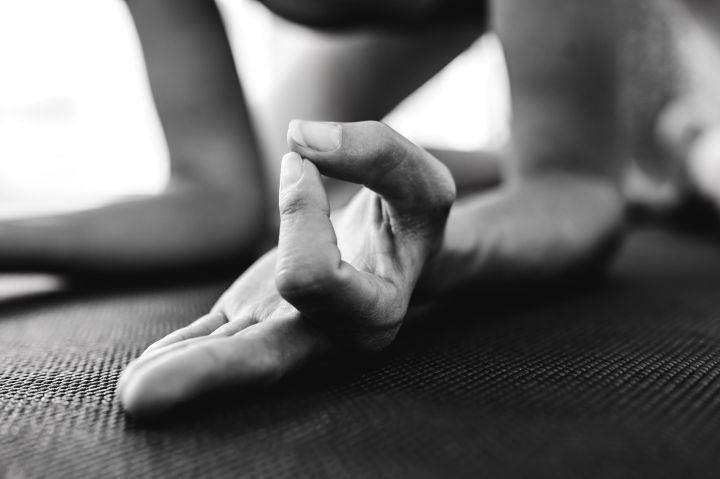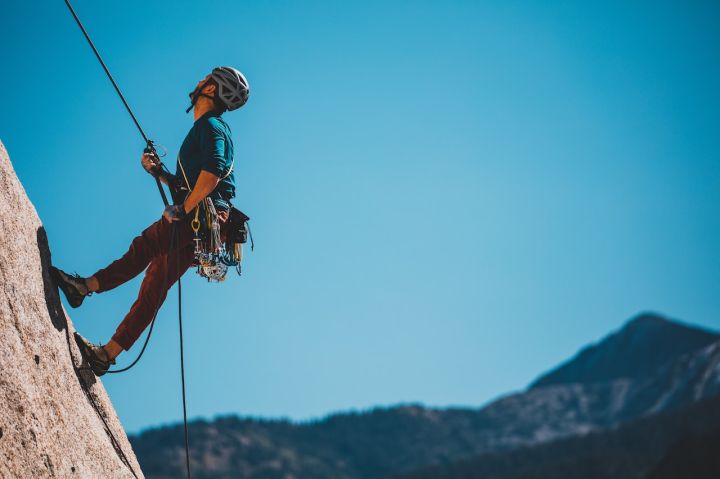The Two Essential Ways to Improve Your Bench Press By 20kg a Month?

Which do you prefer, the free weight chest press or the machine chest press?
Isn't it a theorem of fitness that where you are weak, you need to strengthen? Unfortunately, chest training usually cannot be done in one step.
You need to push big weights and have full muscle mass; you need to push your chest to the fullest, but you also need to have a well-defined pec line. To be one step faster in chest training, don't let go of any detail, including arching your back.

To arch your back or not to arch your back when bench pressing...is the question.
During the bench press for many of our guys, we see them arch their backs very hard. The reason for doing this is directly related to powerlifting competitions. Before we look at whether or not you should arch your back hard when doing the bench press, we need to ask ourselves a simple question: What is your training goal?
The goal here refers to whether you want to build big muscles and look more like a professional bodybuilder, or whether you just want to lift bigger weights.

If the goal is to build as much muscle as possible to improve your body. As kai Greene says: "It's not about the weight, the weight can be put on the back burner. If the goal is to build strength, the powerlifting bench press is an amazing exercise that takes a lot of time to train.
So what does this have to do with the form of the bench press? With regard to the bench press, there are two basic types of training.
1. Fitness
2. Powerlifting

The mechanics of the movement are very different between these two modalities, especially when discussing the question of whether or not the lower back is arched.
Powerlifting bench press form
The form of the powerlifting bench press is determined by the rules of the powerlifting competition. There are four specific points of contact.
Head on the flat bench shoulders on the flat bench buttocks on the flat bench feet on the floor

The extreme arch we see some powerlifters doing on the bench press is a way to shorten the barbell's range of motion. In competition, the barbell must touch the chest and be at rest until the competitor has pushed the barbell to the starting position.
Doing full range of motion on the bench press is much more difficult than stopping when the elbows are at a 90-degree angle. Tightening the scapulae, as no doubt all powerlifters know will reduce the range of travel of the flat bench press. As a result, athletes are able to lift more weight if they keep their backs against the flat bench.

Having the back flat against the flat bench also allows the trainer to be more able to recruit the triceps and anterior deltoids. In terms of function, although powerlifters do not have as well-developed pectoral muscles as bodybuilders, they are able to mobilize more of their triceps and shoulder muscles to push up greater weights. This also allows powerlifters to perform better than bodybuilders at lower reps and larger weights or 1rms.
What does this do for muscle development?
The powerlifting bench press results in muscle growth, but the amount and form of that growth is not the same as the bodybuilding style bench press. Aside from the different form of movement in the flat bench press, most powerlifters train for competition, with a lot of weight and try to avoid multiple reps. The range of reps per set is usually 6 or less.

Many times it is 5 reps, 3 reps or a single rep max weight. These low rep ranges on the bench press recruit one type of muscle fiber - the fast muscle fiber.
Even the best bodybuilders need to recruit fast muscle fibers. These muscle fibers help us push up large weights in fewer reps and make the muscles look rock hard. However, for optimal muscle growth, both fast and slow muscle fibers need to be recruited.

Foot position
In the bench press form of the power lift, placing the feet in front of the body reduces the degree of arching of the back. However, it allows the feet to form a solid aspect with the ground. This improves weight bearing and leg drive in the obliques. The leg drive is a lower body activity through the foot stirring the ground, which is done in two different ways.
In the first, the foot stomps hard on the ground, which channels the force of the leg up and tightens the whole body. The force delivery creates a higher arch in the lower back and a higher chest posture, a tighter posture also means the ability to lift more weight.

The second practice of the leg drive will have a wait until the command to start pushing and then a full leg drive. In other words, the lower body is relaxed before the movement starts, then on the command to push, the legs are pressed into the ground and the whole body is tightened to create a "Vibrational" Effect to move the barbell.
This method is a little risky as it requires relaxation and then tightening. Support keeping the whole body and core tight in any iron lifting movement as this will reduce the risk of injury.

Bodybuilding bench press position
Completely different movement mechanics need to be used in the bench press and in all iron lifting movements. The mechanics of powerlifting do not help you to build the kind of muscles that are found on bodybuilders. Although powerlifters also have a muscular body, if you just do powerlift you will notice a significant difference in muscle type, hardness, fullness and overall density compared to bodybuilders.
If doing bodybuilding style bench presses, lean your back on a flat bench if possible. There can be a small, natural arch in the lumbar region, but in order to maximize the recruitment of muscle fibers from the target muscle groups, the back should not be arched as high as in the powerlifting bench press.

One of the reasons for this is that the bench press is performed for the full stroke and recruits more muscle fibers, it is far more stimulating for muscle building than a partial stroke can provide and enables the target muscle groups, in this case the pectoralis major, to be stimulated for the entire stroke.
When the barbell is lowered completely onto the chest, the muscle fibers of the pectoralis major are felt to stretch, where the pectoralis connects to the biceps and deltoids. Move the barbell using a nimble movement in unison, focusing on concentrating the pectoralis force, contracting the pectoralis major in an upward movement and continuing to focus on concentrating the pectoralis force.

Considering the mechanics of the bench press, no matter how focused on isolating the pecs to fire, the triceps and deltoids will be used to complete the push. However, they are recruited to a far lesser extent than in the form of using the powerlifting bench press.
The full bench press is safer
Here's a tip to keep that safe in the full bench press - both the gym style and the powerlifting style. When lowering the barbell completely to the chest, the following can be incorporated.

Do not relax and lower the load directly onto the chest. Instead, fire the latissimus dorsi muscles and feel like pulling the barbell downwards the angle at which you keep your chest up and your arms extended outwards should not exceed 45 degrees when pulling the barbell down. This is the angle at which the shoulder may be injured. If the elbows and arms are extended beyond 45 degrees and are more inclined to be perpendicular to the torso, this puts a lot of stress on the shoulder and rotator cuff muscle groups.

Fitness bench press reps range
another key difference between the powerlifting bench press form and the bodybuilding bench press form is not really the form, but the range of reps.
With bodybuilding, a higher range of reps is most of the time preferred. This is because higher rep ranges force more blood into the muscle cells and force the body to recruit more muscle fibers; powerlifts only use a fraction of all their muscle fibers to complete a few weight lifts. Most of these fibers are fast muscle fibers.

when the goal is not to push the maximum weight but to achieve an overall body aesthetic, then the slow muscle fibers must also be recruited.
As reps increase to 8-12 on a set, more muscle fibers are mobilized and recruited. As some muscles begin to feel fatigued, the body begins to use other fibers in the muscle group to complete a set. The whole process engorges the muscle cells, stretches the fascia and expands the overall circumference of the muscle.

when resting and recovering, the muscle fibers are then supercharged and ready to take on the same amount of stress and stimulation in the next round of training. Getting stronger, bigger and more endurance. The result is bigger, fuller and better looking muscles.
Summary of bench press forms and arch bridges
If the bench press is purposeful, such as being in or intending to compete in a powerlifting competition, extreme arches are acceptable; if the goal is muscular aesthetics, fitness and bodybuilding, forgo the extreme arch bridge and use the bodybuilding style bench press form above and complete the set with more reps.

Each way of lifting iron has its own mechanics and purpose, and the choice to invest the time and effort to master it all deserves to be taken seriously and respected. Whether it is bodybuilding or weightlifting, mastering the mechanics, form, nutrition and dedication is not an easy task.





